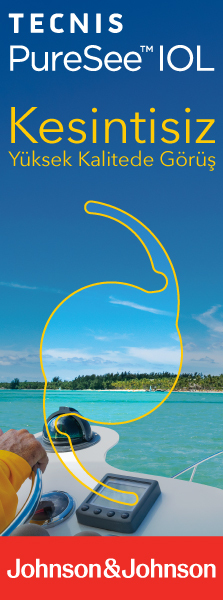TJ-CEO
2009 , Vol 4 , Num 2
Comparison of the Effect of Topical Loteprednol Etabonate and Prednisolone Acetate on Post-Cataract Surgery Inflammation
1Başkent Üniversitesi, Göz Hastalıkları, Konya, Uzm. Dr.2Başkent Üniversitesi, Göz Hastalıkları, Konya, Yrd. Doç. Dr.
3Başkent Üniversitesi, Göz Hastalıkları, Ankara, Uzm. Dr.
4Başkent Üniversitesi, Göz Hastalıkları, Ankara, Prof. Dr. Purpose: To compare the effects of topical loteprednol etabonate 0.5% and prednisolone acetate 1% on postoperative inflammation after cataract surgery.
Materials and Methods: Forty eyes of 40 patients who underwent uncomplicated cataract surgery between October 2008 and February 2009 were included in this study. The patients were divided into two groups randomly; loteprednol etabonate 0.5% and prednisolone acetate 1% were used in group 1 and group 2, respectively. Preoperative and postoperative examinations were performed after 1 day, 1 week, and 1 month, and the anterior chamber cells, flare, best-corrected visual acuity (VA), and intraocular pressure (IOP) of the patients were compared statistically.
Results: There were no statistically significant differences in mean VA or mean IOP measurements between the two groups at any postoperative visit. Although there were no significant differences in mean anterior chamber cells or flare of the patients between the two groups on postoperative day 1, mean anterior chamber cells and flare were significantly higher in group 1 than in group 2 at the first postoperative week (p=0.03, p=0.02). None of the patients had anterior chamber cells or flare at the first postoperative month in the groups. Fibrin reactions were observed in two patients in group 1 and gentamycine+dexamethasone were applied subconjunctivally for treatment.
Conclusion: Loteprednol etabonate 0.5% is effective in controlling postoperative inflammation after cataract surgery, but less effective than prednisolone acetate 1%. Patients who receive loteprednol etabonate 0.5% treatment after uncomplicated cataract surgery must be followed up frequently. Keywords : Loteprednol etabonate, prednisolone acetate, inflammation, phacoemulsification





